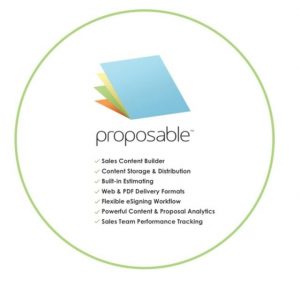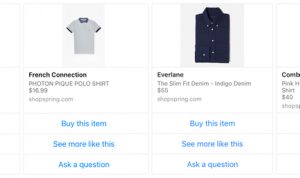My computer’s desktop is nothing short of offensive. To most, it appears to be messy, cluttered and vastly disorganized. My teammates are constantly begging me to clean it up.

Hate to break it to you, but I’m not changing it anytime soon. To me, it is perfect. I know exactly where every file and document is—contrary to popular belief, there IS a method to my madness.
The reality is, I’ve organized this computer solely for myself. If someone else tried to use it, they’d spend weeks trying to decode my scattered thought process (likely cursing me along the way).
The same can be said for many PPC accounts. Oftentimes, the original owner creates and manages the account in their own, unique way. When a someone new takes over, they’ve got a tough job ahead of them. They have to navigate the existing account without fully understanding its historical background and why it’s been organized the way it is.
The best way to overcome this gap is to do an extensive PPC audit anytime you take on an existing AdWords account. Here’s a checklist of the first things I look at in my search campaigns when I dive into a newly acquired account.

PPC Audit Step #1: Be Sure Conversions Are Being Tracked (Properly)
Neglecting to track conversions is one of the biggest mistakes a PPC manager can make. Without this data, it’s impossible to understand whether all of your hard work is paying off! While this should be one of the very first tasks completed after setting up an account, a recent report from Disruptive Advertising found that only 58% of the 2,000 accounts featured in their study had at least one conversion registered.
![]()
Google has made this setup easier and easier through the years. Use it!
That’s bad, but this is worse—of this group, only half of the accounts that were “tracking conversions” had the code implemented correctly. Meaning, only 29% of all accounts reviewed passed muster when it came to tracking conversions.
Be sure that your newly acquired account doesn’t fall into this group. If conversions are registered in the account, be watchful for these tell-tale signs that the tracking has been set up improperly:
- Your click count and conversion count are identical. If this is the case, you either have the most amazing products in the world or your conversion tracking code was added to your landing pages, rather than your thank you/order confirmation page.
- Your conversion rates are super-high, despite low sales numbers. If so, your conversion tracking may be measuring visits to a product page or home page, rather than an order confirmation.
- Your conversion count is suspiciously low, suggesting that you’re missing conversions. In this case, the former account manager neglected to track phone call conversions or forgot to add tracking codes to new landing pages.

Your conversion tracking code should always be placed on the page that appears after a conversion has been completed.
If no conversions are registered on the account, generating and implementing conversion tracking code should be your first order of business!
PPC Audit Step #2: Review Targeting Settings
Setting your campaign targeting settings is a simple activity that takes five minutes, tops, but one small misstep in this section can have a profound impact on your account performance. (You can see how some of our clients learned this the hard way here.) Dive into each of your newly-acquired campaigns to review the previous owner’s targeting settings and ensure they make sense for the business.

Key items to check in on are:
- Network Settings: The goals, expectations and overall performance of ads on the Search Network are significantly different than those running on the GDN (get the low-down on each network here). The audit/optimization process that you follow will be dependent on the network you’re targeting.
- Mobile Bid Adjustments: Do you want to show on mobile devices? If so, make sure that your bid modifiers are high enough to score you visibility for mobile searches. To determine this, segment your performance by device to assess the effectiveness of your existing mobile bids. Is your new company not quite ready for mobile traffic? Set the bids to -100%, until you get your mobile-preferred ads and mobile landing pages up to snuff. I recommend prioritizing this, given the ever-growing percentage of searches occurring on mobile devices.
- Target Locations: Check to ensure that your company services the regions that your account has opted into. Then, take this one step further and review your geo-reports. You may find that a particular area performs ridiculously well (or ridiculously poorly) and can fine-tune the account to prioritize that location.
PPC Audit Step #3: Assess Ad Group Relevancy
The general rule of thumb is that an ad group should never contain more than 15-20 keywords and, for auditing purposes, I think this is a good jumping off point. Scan your newly inherited account to find ad groups that hold more than 20 keywords. These are likely the groups that will require the most clean-up.
You’re probably thinking, why the heck does number of keywords matter so much? Realistically, your ad groups’ keyword count won’t impact performance. However, keep in mind that you’re serving the same set of ads for every keyword in a given ad group. If your keyword list is huge, it is likely includes various themes, meaning you’re forced to write generic ad copy.
Instead, your goal should be to populate each ad group with a list of super-granular keywords that all share the same semantic theme. You can then create hyper-specific ads for each ad group that are truly reflective of what the searcher is looking for.

I think we can agree that it’d be way easier to write an ad for the second keyword group than the first!
Despite the best of intentions, it’s easy to wind up with a few big ad groups in your account. Even if you start with small, tightly-knit keyword combinations, as more and more terms are added, your ad groups can grow to an unwieldy size. It’s important to QA them regularly and move terms that aren’t a good fit into new ad groups.
PPC Audit Step #4: Check Number of Ads Enabled Per Ad Group
If the account you inherit only has one active ad in each ad group, it’s an indication that the previous manager was not testing ad variations, which severely limits account optimization. On the flipside, having multiple active ads per ad group can also be detrimental. Likely, the previous owner was a testing zealot who dreamt up plenty of ad creative and tried to test it all at once (fail) or he just never bothered to end any of his tests (double fail).
The sweet spot you should be shooting for is two to three ad variations per ad group. This is a manageable number of ads to run tests with. Once you’d identified your winner, pause the losing ad and try testing a new variation.
PPC Audit Step #5: Dive into Ad Extensions
If your new account doesn’t have any ad extensions set up, hop to it! In this day and age, extensions are not a nice to have, they’re a must for creating competitive ad copy.

Ray-Bans has the right idea. This ad features callout extensions, structured snippets and sitelinks.
Luckily, since Google’s announcement that extensions officially do impact ad rank, most advertisers have gotten their act together and implemented them. However, just because these extensions exist, doesn’t mean you can cross them off of your to-do list.
Confirm that the extensions running are appropriate fits for the business itself. For example, if you’re using call extensions, be sure that your company’s phone lines are staffed to handle incoming call volume. If you don’t have someone to answer incoming calls around the clock, schedule the extensions to only appear during your hours of business. If you’re advertising for an e-commerce company with no physical storefront, be sure to eliminate any location extensions so your ads don’t appear in Google Maps. Finally, check to ensure that your sitelinks, callouts and structured snippets are truly representative of your offerings and not overly repetitive.

Don’t forget about automated extensions! You can now view the performance of any automated extensions that Google has served alongside your ads from the Automated Extensions Report in the Ad Extensions section of AdWords. Typically, we see that these yield positive performance but, if any appear to be negatively impacting the account, stop the bleed by opting out of them in the advanced extension options settings!
PPC Audit Step #6: Review Keyword Match Type Settings
A well-run AdWords account typically includes keywords set to a variety of match types. Each serves a unique purpose, for example broad match is great for keyword research, while exact helps to ensure you’re only connecting with the most highly-qualified searchers.

One of the most common (and dangerous) account faux-pas is running all keywords on the same match type. We see this most commonly with broad match (since it is Google’s default). Although these broad-match keywords yield plenty of traffic, many of their impressions are from people searching terms that are loosely related to the business, resulting in disastrous click-through and conversion rates and poor Quality Scores. Although broad match is usually the culprit for this problem, using all phrase or exact match can be just as damaging, as they may limit volume considerably.
If the account you’ve inherited is already using a mixed match types, it doesn’t mean you’re off the hook. Take the time to dive in and understand the previous owner’s strategy and ensure that it was implemented correctly. Just because they’ve attempted to enact an advanced strategy, like tiered bidding per match type, doesn’t mean they did it right!
PPC Audit Step #7: QA Your Negative Keyword Lists
Negative keywords are your best defense against impressions and clicks from unqualified searchers. If the previous account manager was not utilizing negatives, your work is cut out for you. You can proactively set negatives by doing some guesswork, but with an active account, I like to take more of a reactive approach. Try heading to your query reports to understand exactly what terms have been triggering your ads. Be on the lookout for terms that you do not want to continue showing for and set them as negatives.

As you can see, we have a robust “master list” of negatives that we use for all campaigns!
If the former account manager added negatives already, review the list with a fine-toothed comb. Confirm that all of the negative terms are genuinely a good fit for the business and are not blocking impressions for any of your keywords. In addition, check your negative keywords’ match type settings to ensure that they are operating as anticipated. I can’t tell you how many accounts I’ve seen with negatives set to “exact” match that are doing absolutely nothing for them. These settings can drastically affect the impact of your negatives.
PPC Audit Step #8: Create Your Game Plan
Now that you have all the ground work done, you know exactly what you need to do to whip the account into tip-top shape. Once you’ve cleaned it up, the real fun begins. Happy auditing!
Looking for a short-cut? Get a free, instant account audit with the AdWords Performance Grader.
Digital & Social Articles on Business 2 Community(31)
Report Post








